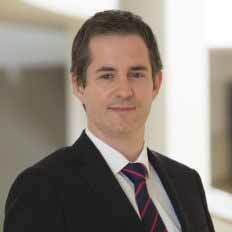Marc Abrahams's Blog, page 70
October 5, 2021
Robotic Barbery on the Lawn: Hedghogs
Peace has yet to be attained between robotics, lawn care specialists, and hedgehogs. This study wades into the vexatious arena:
“Wildlife Conservation at a Garden Level: The Effect of Robotic Lawn Mowers on European Hedgehogs (Erinaceus europaeus),” Sophie Lund Rasmussen, Ane Elise Schrøder, Ronja Mathiesen, Jeppe Lund Nielsen, Cino Pertoldi, and David W. Macdonald, Animals, vol. 11, no. 119, 2021. (Thanks to Jesper Milan for bringing this to our attention.) The authors, at the University of Oxford, UK, and three institutions in Denmark— Aalborg University, University of Copenhagen, Fossil and Moclay Museum, Nykøbing Mors, and Agilent Technologies Denmark—report:
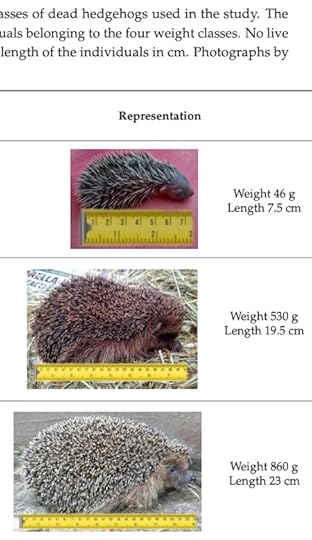
this study aimed to describe and quantify the effects of robotic lawn mowers on hedgehogs, and we tested 18 robotic lawn mowers in collision with dead hedgehogs. Some models caused extensive damage to the dead hedgehogs, but there were noteworthy differences in the degree of harm inflicted, with some consistently causing no damage. None of the robotic lawn mowers tested was able to detect the presence of dead, dependent juvenile hedgehogs, and no models could detect the hedgehog cadavers without physical interaction.

October 4, 2021
Alissa Clear joins Luxuriant Flowing Hair Club for Scientists (LFHfC)
Alissa Clear has joined the The Luxuriant Flowing Hair Club for Scientists (LFHCfS). She says:
(LFHCfS). She says:
I have a BSc in Biology from Purdue and a PhD in Molecular and Cellular Biology from the City of Hope National Medical Center.I’ve worked in many labs throughout my scientific career – structural biology, agronomy, RNA biology, immuno-oncology, classical genetics, infectious disease – I’ve loved all of them, and left behind flowing luxuriant hairs in each & every one. My thesis research focused on utilizing a model system to express and study a human protein implicated in breast cancer susceptibility to identify critical functions and structural components for future drug targeting. During my grad school years, my hair fluctuated between purple and brown like a Briggs-Rauscher oscillating color change experiment, and I discovered how to master a curl. As a postdoctoral fellow, I studied antifungal drug resistance to identify genes involved in microbial escape mechanisms, and I entered my blonde phase. Now, I leverage my broad scientific background to help answer strategic questions driving novel drug development and patient-centric healthcare solutions, and endeavor ever towards the adage, “The bigger the hair, the closer to God.”
Alissa Clear, Ph.D., LFHCfS
Consultant
Clarion | A Life Sciences Consultancy
Boston, Massachusetts, USA
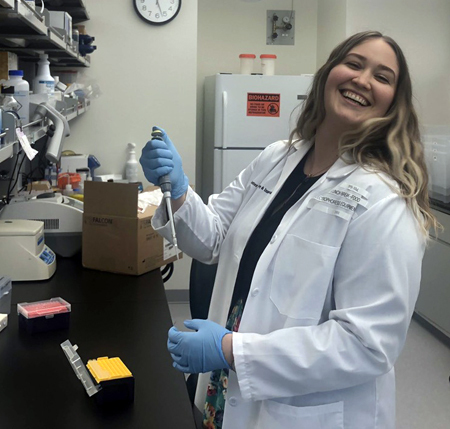

Music Sentiment and Stock Returns [new study]
 If you fancy dabbling on the stock market, you might want to keep an eye on the Spotify charts. According to new research from The London Business School, Auckland University of Technology and the Audencia Business School, the measures of positive or negative mood which the music download choices indicate :
If you fancy dabbling on the stock market, you might want to keep an eye on the Spotify charts. According to new research from The London Business School, Auckland University of Technology and the Audencia Business School, the measures of positive or negative mood which the music download choices indicate :
“ is positively correlated with same-week equity market returns and negatively correlated with next-week returns.”
See Music Sentiment and Stock Returns Around the World Journal of Financial Economics (JFE), Forthcoming (open access).

October 3, 2021
Podcast Episode #1082: “The Man in the Black Bag”
In Podcast Episode #1082, Marc Abrahams shows an unfamiliar research study to psycholinguist Jean Berko Gleason. Dramatic readings and reactions ensue.
Remember, our Patreon donors, on most levels, get access to each podcast episode before it is made public.
Jean Berko Gleason encounters:
“Attitudinal effects of mere exposure,” Robert B. Zajonc, Journal of personality and social psychology, vol. 9, no. 2, part 2, 1968.
Seth Gliksman, Production Assistant
Available on Spotify, Apple Podcasts, Overcast, Google Podcasts, AntennaPod, BeyondPod and elsewhere!

September 30, 2021
Inverted Rhino Translocation: 2021 Ig Informal Lecture
The Ig Nobel Prizes honor achievements that make people LAUGH, then THINK.
In the Ig Informal Lectures, some days after the ceremony, the new Ig Nobel Prize winners attempt to explain what they did, and why they did it. We are releasing these lectures one at a time.
The 2021 Ig Nobel for Transportation was awarded to Robin Radcliffe, Mark Jago, Peter Morkel, Estelle Morkel, Pierre du Preez, Piet Beytell, Birgit Kotting, Bakker Manuel, Jan Hendrik du Preez, Michele Miller, Julia Felippe, Stephen Parry, and Robin Gleed, for determining by experiment whether it is safer to transport an airborne rhinoceros upside-down.
REFERENCE: “The Pulmonary and Metabolic Effects of Suspension by the Feet Compared with Lateral Recumbency in Immobilized Black Rhinoceroses (Diceros bicornis) Captured by Aerial Darting,” Robin W. Radcliffe, Mark Jago, Peter vdB Morkel, Estelle Morkel, Pierre du Preez, Piet Beytell, Birgit Kotting, Bakker Manuel, Jan Hendrik du Preez, Michele A. Miller, Julia Felippe, Stephen A Parry; R.D. Gleed, Journal of Wildlife Diseases, vol. 57, no. 2, 2021, 357–367.

When destiny calls: “Everybody on the planet wants to know”
From an interview in the Turkish news outlet NTV with Pavlo Blavatskyy, after Blavatskyy was awarded the 2021 Ig Nobel Prize for economics:
Blavatskyy said, “One day, I got a call just like you called me today. They said you won this award. There was a lot of media attention in many countries. I was really surprised. You’ve been working for 20 years and nobody even notices what you’re doing, then “Someday, everybody on the planet wants to know what you’re doing.”


September 28, 2021
Tongue-Tripping Title of the Month
This month’s Tongue-Tripping Title of the Month comes from a study published almost a decade ago:
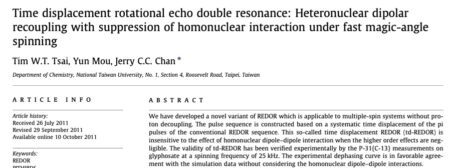
“Time displacement rotational echo double resonance: heteronuclear dipolar recoupling with suppression of homonuclear interaction under fast magic-angle spinning,” Tim W.T. Tsai, Yun Mou, and Jerry C.C. Chan, Journal of Magnetic Resonance, vol. 214, no. 1. January 2012, pp. 315-8. (Thanks to Tony Tweedale for bringing this to our attention.) The authors are at National Taiwan University.

September 27, 2021
Evil – the Math [new study]
Philosophers, theologians, and many others have been searching for an unequivocal definition of Evil for at least 2,000 years. Perhaps a mathematical one might help?
Francisco Parro, who is Associate Professor of Economics, Universidad Adolfo Ibañez, School of Business, Chile, makes steps towards such things in his latest paper : The problem of evil: An economic approach [ ref: Kylos Journal (early view) ]
If the ramifications of the new approach are not immediately evident from the paper’s abstract, a full version of the study may be viewed here.

September 23, 2021
Modes of Cat-Human Communication: 2021 Ig Informal Lecture
The Ig Nobel Prizes honor achievements that make people LAUGH, then THINK.
In the Ig Informal Lectures, some days after the ceremony, the new Ig Nobel Prize winners attempt to explain what they did, and why they did it. We are releasing these lectures one at a time.
The 2021 Ig Nobel for Biology was awarded to Susanne Schötz, Robert Eklund, and Joost van de Weijer, for analyzing variations in purring, chirping, chattering, trilling, tweedling, murmuring, meowing, moaning, squeaking, hissing, yowling, howling, growling, and other modes of cat–human communication.
REFERENCE: “A Comparative Acoustic Analysis of Purring in Four Cats,” Susanne Schötz and Robert Eklund, Proceedings of Fonetik 2011, Speech, Music and Hearing, KTH, Stockholm, TMH-QPSR, 51.
REFERENCE: “A Phonetic Pilot Study of Vocalisations in Three Cats,” Susanne Schötz, Proceedings of Fonetik 2012, Department of Philosophy, Linguistics and Theory of Science, University of Gothenburg, Sweden.
REFERENCE: “A Phonetic Pilot Study of Chirp, Chatter, Tweet and Tweedle in Three Domestic Cats,” Susanne Schötz, Proceedings of Fonetik 2013, Linköping University, Sweden, 2013, pp. 65-68.
REFERENCE: “A Study of Human Perception of Intonation in Domestic Cat Meows,” Susanne Schötz and Joost van de Weijer, Proceedings of the 7th International Conference on Speech Prosody, Dubin, Ireland, May 20-23, 2014.
REFERENCE: “Melody in Human–Cat Communication (Meowsic): Origins, Past, Present and Future,” Susanne Schötz, Robert Eklund, and Joost van de Weijer, 2016.

September 22, 2021
YouTube, the Ig Nobel Prizes, and the Year 1914
[NOTE: On September 22, 2021 we more or less solved the problem. See the end of this blog post for the happy news about that. The original blog post was written on September 13, while we were intensely wrestling with the problem.]
YouTube’s notorious takedown algorithms are blocking the video of the 2021 Ig Nobel Prize ceremony.
We have so far been unable to find a human at YouTube who can fix that. We recommend that you watch the identical recording on Vimeo.
The Fatal Song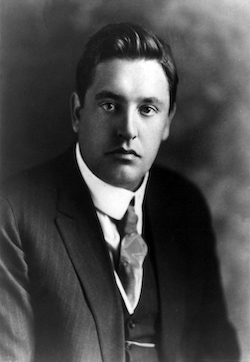
This is a photo of John McCormack, who sang the song “Funiculi, Funicula” in the year 1914, inducing YouTube to block the 2021 Ig Nobel Prize ceremony.
Here’s what triggered this: The ceremony includes bits of a recording (of tenor John McCormack singing “Funiculi, Funicula”) made in the year 1914.
The Corporate TakedownYouTube’s takedown algorithm claims that the following corporations all own the copyright to that audio recording that was MADE IN THE YEAR 1914: “SME, INgrooves (on behalf of Emerald); Wise Music Group, BMG Rights Management (US), LLC, UMPG Publishing, PEDL, Kobalt Music Publishing, Warner Chappell, Sony ATV Publishing, and 1 Music Rights Societies”
UPDATES: (Sept 21, 2021) A clear writeup on Reclaim the Net. (Sept 19, 2021) There’s an ongoing discussion on Slashdot.(Sept 13, 2021) There’s an ongoing discussion on Hacker News, about this problem.
PROBLEM SOLVED (probably): (September 22, 2021) Still unsuccessful at making any contact with any human being at YouTube, we (think we) solved the problem by recording our own performance of the old song “Funiculi Funicula”, and then editing that into the video recording of the Ig Nobel Prize ceremony. The new musical performance is by soprano Maria Ferrante and accordionist Thomas Michel (both of whom also starred in the opera that was part of the ceremony).
Special thanks to Bruce Petschek, Richard Baguley, Julia Lunetta, Maria Ferrante, Thomas Michel, David Kessler, and Jeff Hermes for their time, effort, and wisdom at working around and thus (probably) overcoming the problem.
Here is the new version of the ceremony video:
And here is the original version (but living on Vimeo, rather than YouTube), that has the John McCormack 1914 recording of “Funiculi Funicula”:

Marc Abrahams's Blog
- Marc Abrahams's profile
- 14 followers


